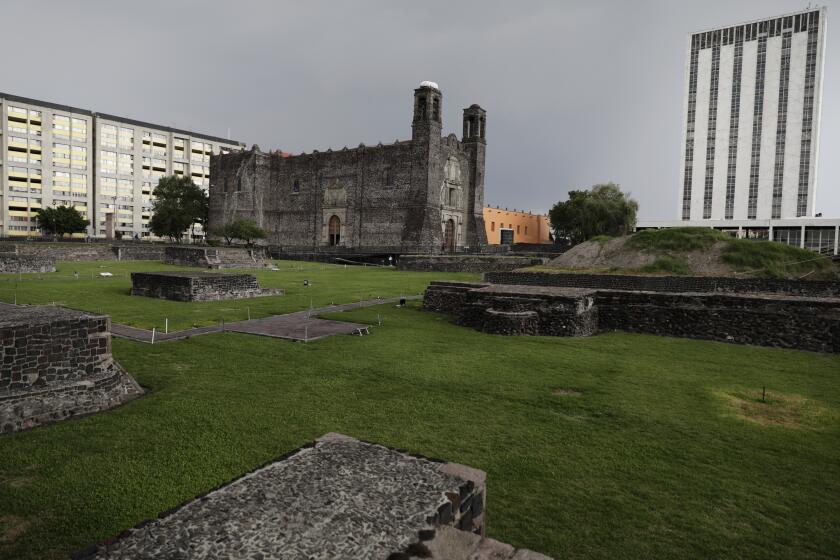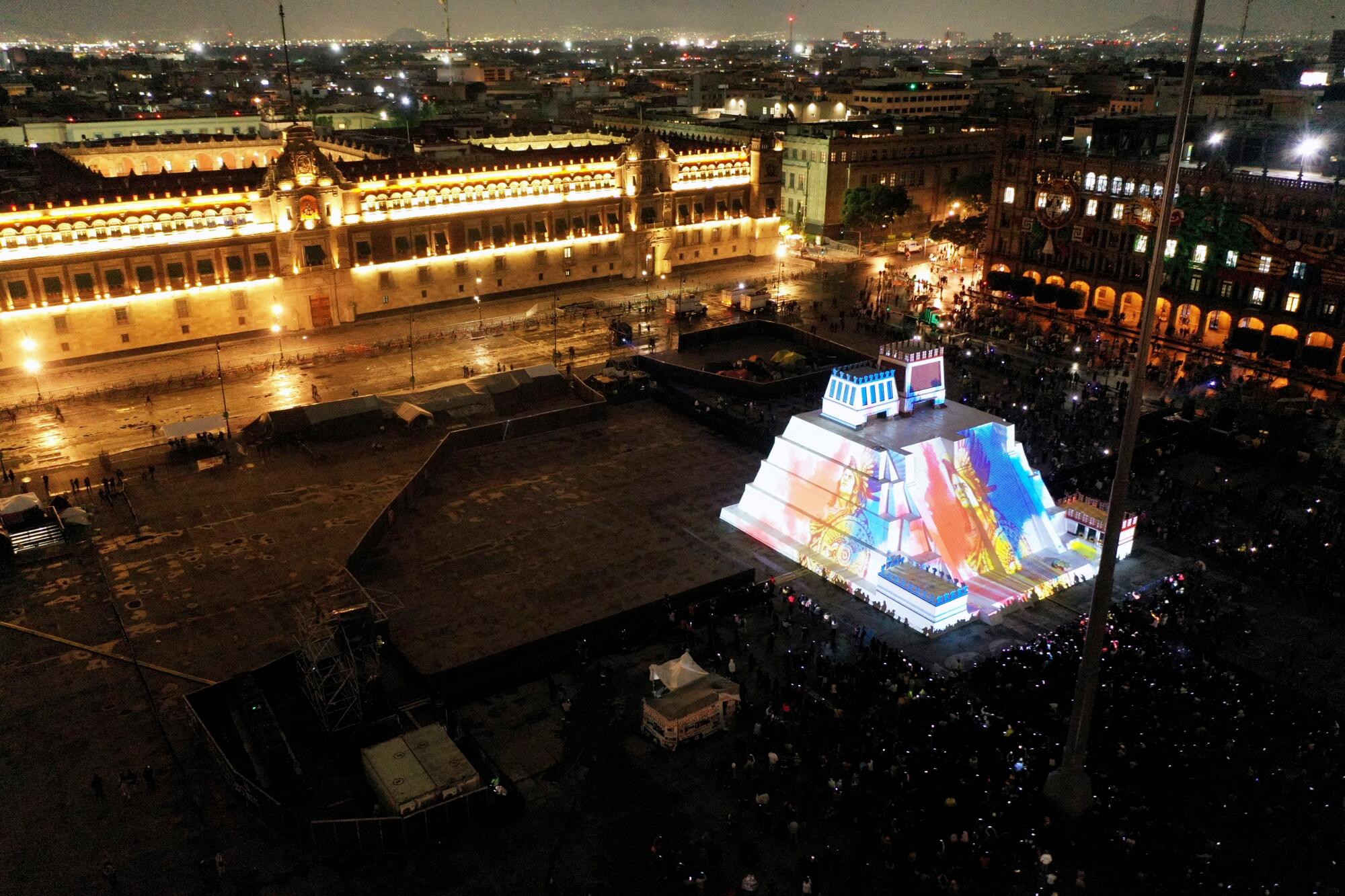
- Share via
MEXICO CITY — A replica of the Great Temple of the Aztecs, about a third of the size of the original, rose from the floor of the central square of Mexico’s capital this summer like a gargantuan child’s toy, more than 50 feet high, a gleaming form smack in front of the baroque National Palace. At night, the pyramid’s slanting white walls became a video-mapping screen that told a dramatic animated story of the rise and fall of the Mexica, or Aztec Empire — an event that took place 500 years ago, right on this spot in a city on a lake that was once called Tenochtitlan.
Throngs of locals and tourists showed up to watch the 15-minute history show. Vendors walked among the crowds selling Aztec-style souvenir headdresses with colored lights, filling the Zócalo with flashes of revelry.
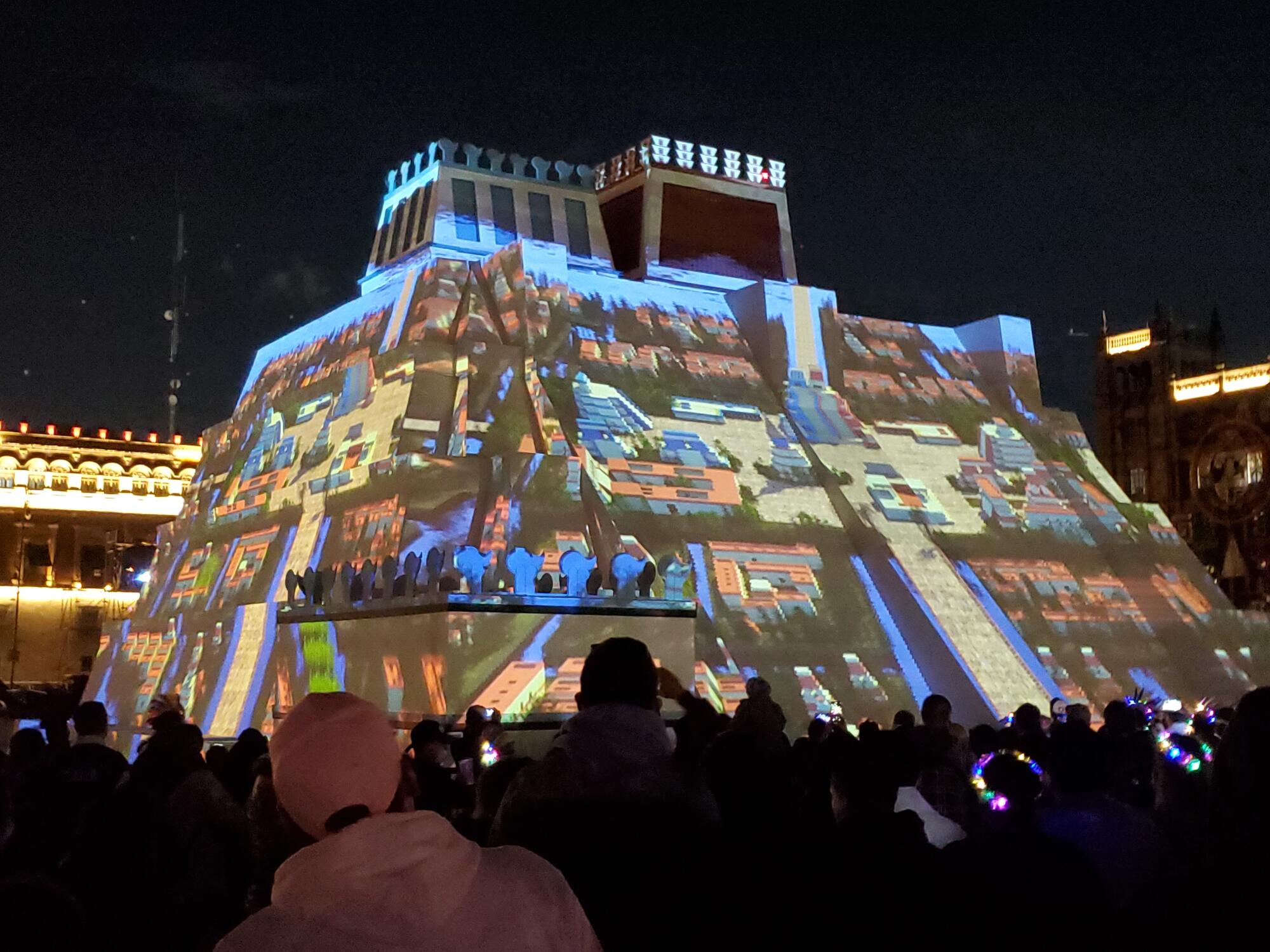
“It’s marvelous. Every kid should get a chance to see it,” said Elizabeth Fuerte, a museum docent who watched one night while wearing one of the low-tech headdresses. “We’ve always had this ‘bronze’ history that the government has imposed upon us, and I think we’re ready for this change.”
It was a weird scenario in a country accustomed to contradictions. Mexico is at once rich and poor, tolerant and conservative, low-brow and refined. It is proud of its pre-Hispanic millenary history, yet still unable to reconcile with it.
For many, the Templo Mayor replica crystallized this problem, reflecting a broader struggle happening in Mexico’s cultural politics, midway through the six-year term of leftist President Andrés Manuel López Obrador, also known as AMLO.
The defeat of the Aztecs in 1521 still stirs profound disquiet in the national psyche.
Since taking office in late 2018, López Obrador’s government and its supporters have made strategic attempts to exalt the country’s Indigenous roots in official events and cultural projects. They’ve taken down a statue of Christopher Columbus and are in the process of replacing it with a replica of a pre-Columbian statue believed to depict a Huastecan woman. They’ve renamed landmarks, including a monument known for generations as the Sad Night (for Cortés’ forces when they lost a key battle to the Mexica), now called the Victorious Night.
A key Mexico City thoroughfare, Puente de Alvarado, named for the conquistador known for leading the most horrifying massacres of captured Aztecs, is now México-Tenochtitlan, the formal name of the original city. And they’ve reshuffled resources to support more Mexican Indigenous artists, textile makers and artisans.
The government has also sought apologies from the Vatican and Spain for atrocities going back five centuries. First Lady Beatriz Gutiérrez Müller, who is chairing a new commission on historical memory in Mexico, calls it a process of “decolonization.”
It’s a process that’s infuriated several historians, academics and columnists for local dailies and conservative news journals, including Letras Libres, where writers routinely accuse AMLO of attempting a total rewrite of Mexican history.
Eduardo Matos Moctezuma, the highly respected de facto dean of Mexican archaeology, told the financial daily El Economista in August that “these things are not the way to consolidate our origin.”
Yet for all of the activity around the reframing of Mexico’s history, some have asked: Is it all for show?
“In Mexico, the principal cultural appropriator is the state,” said Yasnaya Elena Aguilar Gil, a well-regarded Oaxacan linguist and writer of Mixe descent.
Soon after it was erected in August, the replica and light show became a political lightning rod and meme generator, with one likening it to the pyramid-like stage design for the Daft Punk “Alive” tour of 2006-07. Detractors called it a form of gaudy populism.
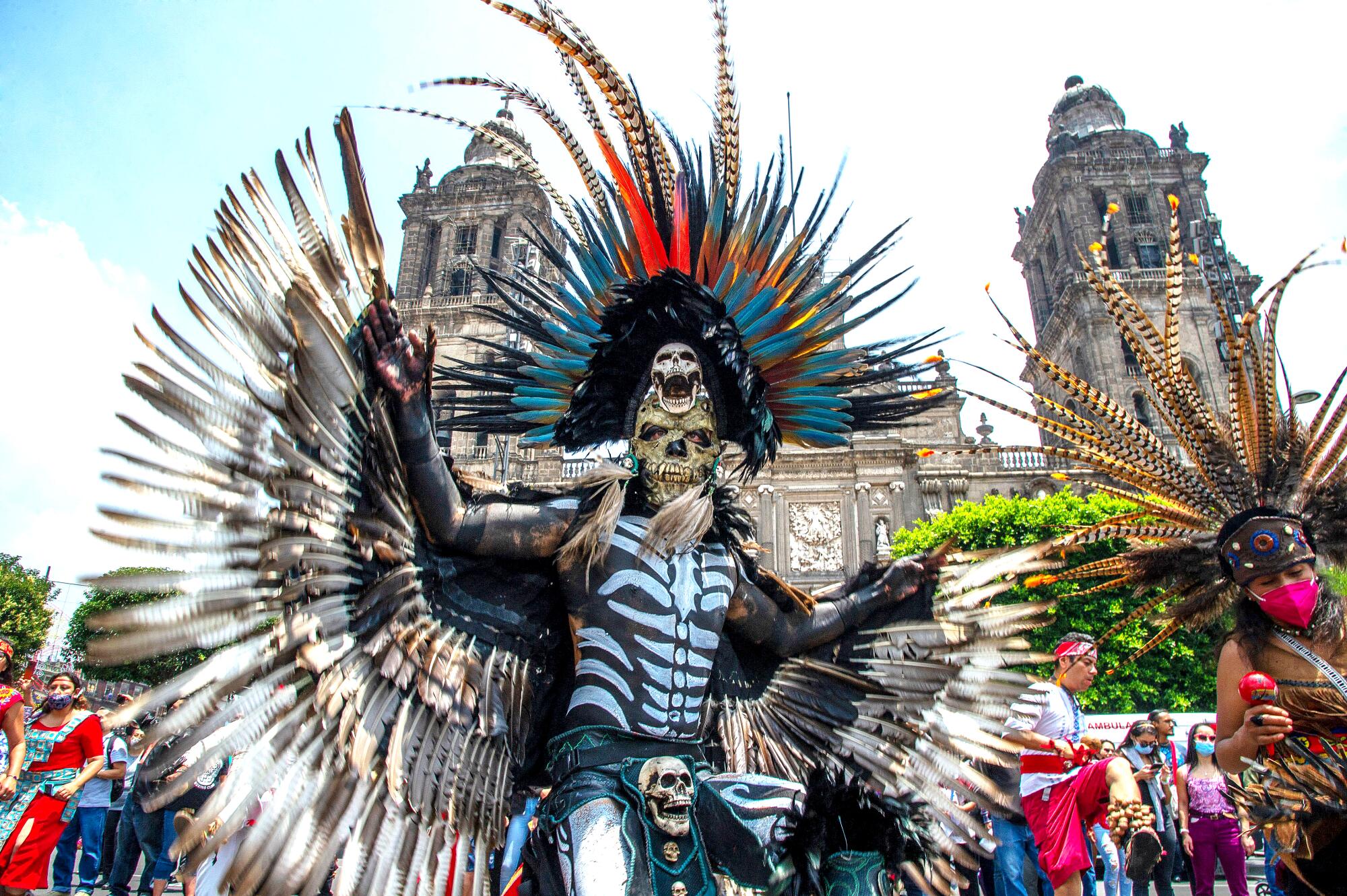
Vanessa Bohorquez, Mexico City’s secretary of culture, defended the Templo Mayor replica and light show. “It’s an unpaid debt,” Bohorquez said, referring to the position of Indigenous Mexicans in the city’s cultural apparatus.
“Conferences reach certain sectors, exhibitions inside museums are important, but at [the Zócalo], it reaches all the sectors,” Bohorquez said in an interview. “Visibility is what’s most important.”
Not far from the plaza where the replica stood until last month, the actual Templo Mayor sits like an open wound to the sky. It doesn’t look like much at sidewalk level, a crust of a structure in the dense colonial historic center, but it’s there, like a sheet cake with its top half lobbed off.
A museum built in 1987 and a bronze mini-replica nearby show what the temple once looked like, which is breathtaking even in miniature form: The Mexica’s Sacred Precinct once contained sweeping plazas, libraries and temples to popular deities. To this day, the entire area around the site seems to hum with layers of history.
But some complain that it is history neglected. Due to the pandemic, the culture secretariat imposed a nearly 75% budget cut in 2020, which observers said could lead to deterioration at some culture sites. In April, for instance, a violent hailstorm led to the collapse of a metal roof covering the so-called House of the Eagles chamber near the Templo Mayor. Months later, despite promises by the government to repair the damage, the site is regarded as an eyesore to the famously proud locals.
In an interview with The Times, national culture secretary Alejandra Frausto defended the pace of repairs, and said funding for research and critical infrastructure was not touched during the budget decreases.
“It’s not something that can be moved from one day to the next, and it’s not all because there is no money, that is completely false,” Frausto said. “The Templo Mayor is preserved and protected.”
Yet for contemporary Indigenous leaders, gestures like the light show by the government about their heritage have rung hollow, they say, in the face of persistent exploitation and neglect among native groups across Indigenous Mexico. Contract workers in culture sectors have protested delayed payments. And assassinations of Indigenous or environmental leaders and journalists persist in Mexico.
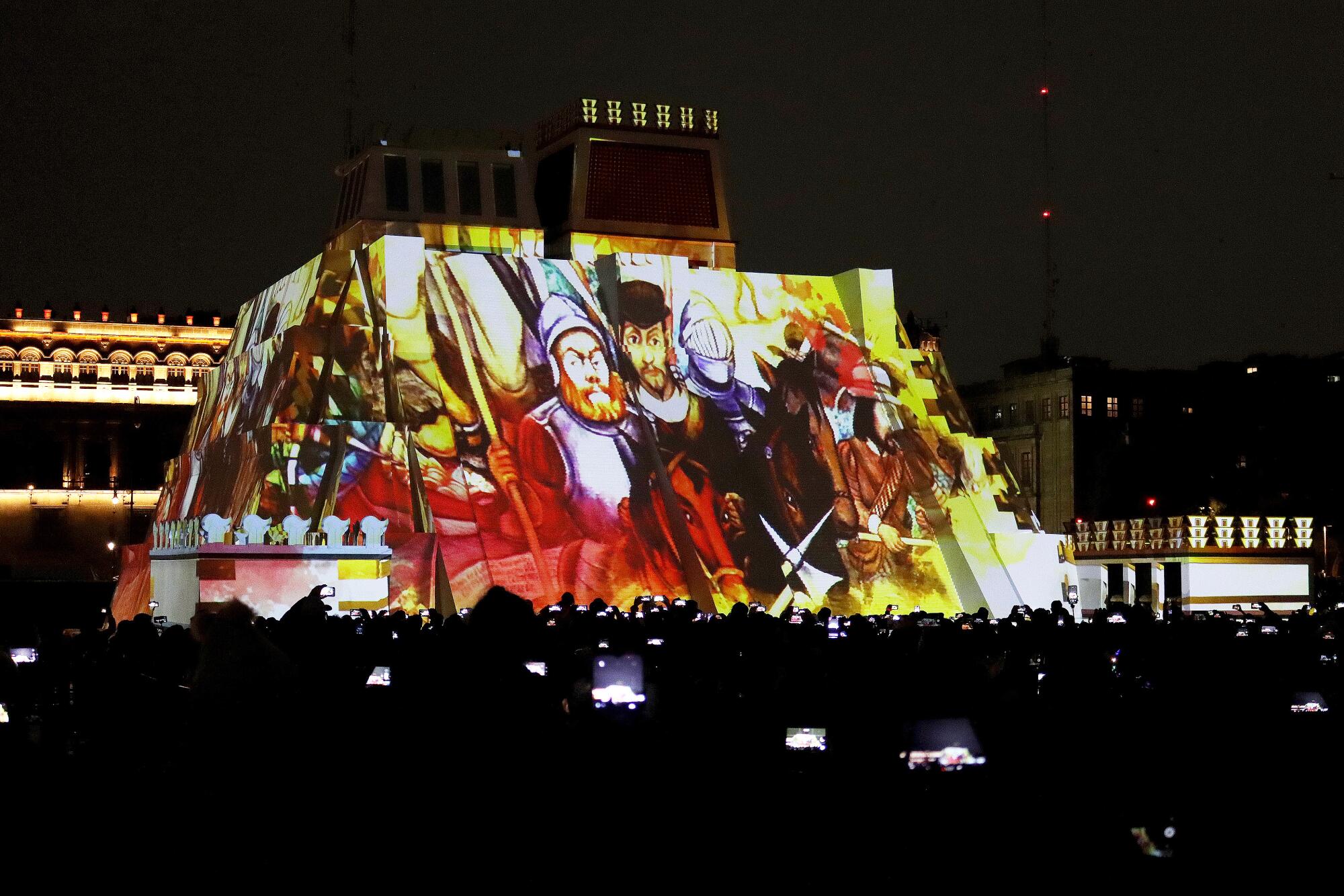
Cultural recycling
Centering Aztecs over other Indigenous groups, and building a flashy public show about it, is a classic thing that governments in Mexico have continued to do, said Aguilar Gil, no matter the political stripe. “It’s a recycling of post-Revolutionary nationalism,” she said. “The answer can’t be again the appropriation of the pueblos, whether Aztec or Maya or any other.”
The culture war in Mexico has also taken on a transnational scope, with Mexico’s leader increasingly exchanging barbs about the legacy of the conquest with right-wing figures across the Atlantic in Spain. Last month, José María Aznar, the conservative former prime minister of Spain, mocked López Obrador for his request that Spain and the pope apologize to Mexico.
Big media might give us a variety show of Latino celebrities waxing poetic about Hispanic Heritage Month. The emoji generation has other ideas.
While Pope Francis did ask “for forgiveness for social sins and all actions and omissions that did not contribute to evangelization” and “acknowledge mistakes committed in the past that have been very painful” in a letter issued Sept. 27 to commemorate Mexico’s 200 years of independence from Spain, Aznar bluntly said, “I will not apologize.”
“If certain things hadn’t happened, you wouldn’t be there,” Aznar said. “You wouldn’t be able to be called what you’re called, or have been baptized.”
In August, during the commemorations of the fall of Tenochtitlan, the far-right party Vox in Spain, in a clear provocation, declared the conquest a source of pride that led to the “liberation” of Mexico under Aztec rule.
The government’s push to “decolonize” has pressed forward. López Obrador’s plans have been carried out by the first lady and the president’s close political ally, Mexico City Mayor Claudia Sheinbaum, a frontrunner for their party’s next presidential nomination.
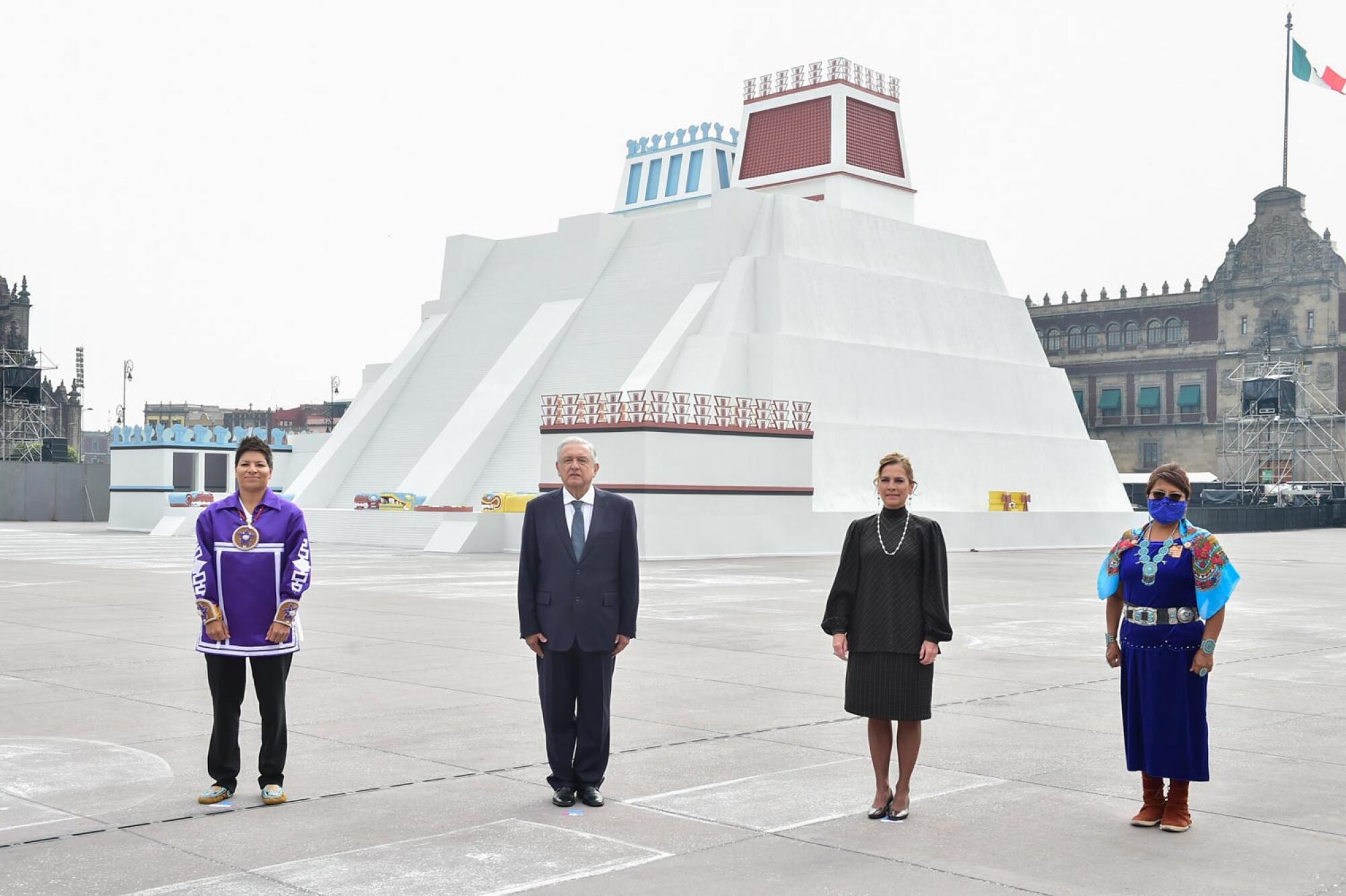
They have peppered the news cycles with affirmative actions, such as the letters that culture secretary Frausto sent to high-fashion labels, including Carolina Herrera, accused of appropriating Indigenous textile designs, complete with references to the exact pueblo where each design originated.
“We are convinced that no one should be left behind, and that we should place in the center of the agenda those persons who’ve historically been erased or forgotten. That’s our goal, ourselves and the president,” said secretary Frausto.
“Of course there are people bothered by this, because of racism and classism, and this idea that some cultural manifestations are superior to others,” she added. “But it’s all enriching. I don’t think this is about universes opposed to one another.”
Sympathetic academics say the jitters are unwarranted, and that Mexico should be ready for more. After all, this is the first time the old-school activists who never stopped believing in classic leftist principles have been elected in Mexico, said Mariana Botey, a longtime Mexican artist, curator and professor in the department of visual arts at UC San Diego.
“The re-centering of Indigenous history and culture makes total sense as a political project that understands itself as rooted in the long historical march of the Mexican left,” Botey said in an interview. “In a sense, this is the most persistent form of the Mexican culture wars, which animated the underlying confrontation between conservatives against liberals in the 19th century, and Indigenistas against Hispanistas in the 20th century.”
Botey characterized the critiques of the AMLO government from academic, creative and intellectual elites as close to “hysterical.”
“The re-indigenization of the political and cultural imaginary was launched by the EZLN and neo-Zapatismo,” the professor said, referring to the Indigenous guerrilla movement in the state of Chiapas that revolted against the government in 1994. “The process continues, and the fear of the white elites is a reaction to the possibility that this could evolve as a new cultural and political construction that is in fact supported by a majority.”
Excavated history
When the Templo Mayor was first uncovered in modern times, 1978, it was a staggering find — the physical remains of a religious structure that once rose as tall as a 15-story building.
Curiosity about the site swept through the city, said Leonardo López Luján, who heads the Templo Mayor archaeological dig, in a recent online talk. Researchers allowed temporary pathways and viewing areas for the public as the ruins were uncovered. Some visitors brought flowers and offerings to a freshly uncovered monolith of the goddess Coyolxauhqui.
Even then, top Mexicanists including the writer Fernando Benitez suggested that the Templo Mayor should be reconstructed to its original form, as had been done at Teotihuacán and Chichén Itzá.
But the idea was eventually scrapped. Officially, it remains an ongoing dig, with just 12% of the Sacred Precinct excavated overall, López noted.
Jaw-dropping discoveries are still commonplace. In 2019, authorities disclosed they’d come upon the skeletons of a child and a jaguar, each dressed with garments characterizing the war god Huitzilopochtli, surrounded with seashells, starfish and pieces of coral. Both child and animal had their hearts torn out, authorities said, a definitive sign of ritual sacrifice. Diggers have identified hundreds of elaborate offerings dug and buried into the ground around the Templo Mayor.
The light shows on the Templo Mayor replica began Aug. 13 to coincide with the 500th anniversary of the end of Aztec rule, an occasion the government treated with lavish sweeps. López Obrador and top members of his cabinet held a ceremony with Indigenous women leaders from Canada and the United States as guests of honor. Mexico gave the event an air of trilateral severity. The leader and guests posed for photographs before the pyramid replica.
On Sept. 15, the night of “The Shout of Independence,” or “El Grito,” López Obrador and the first lady watched the light show a last time from the balcony of the National Palace, as viewers tuned in for the holiday custom from across the U.S. and Mexico.
The replica came down the following morning to make room for the Independence Day military parade.
But its symbolism has lingered. The push, at least at the Zócalo on a recent night, seemed to be working. Audiences on the plaza persistently raved about it. More broadly, AMLO’s approval rating has taken hits but remains overall high.
“On this question of national identity, we have to start seeing it as beginning in the era of ancient Mexico, and not since the era of what came after the Revolution,” said Fuerte, the museum docent viewing the spectacle.
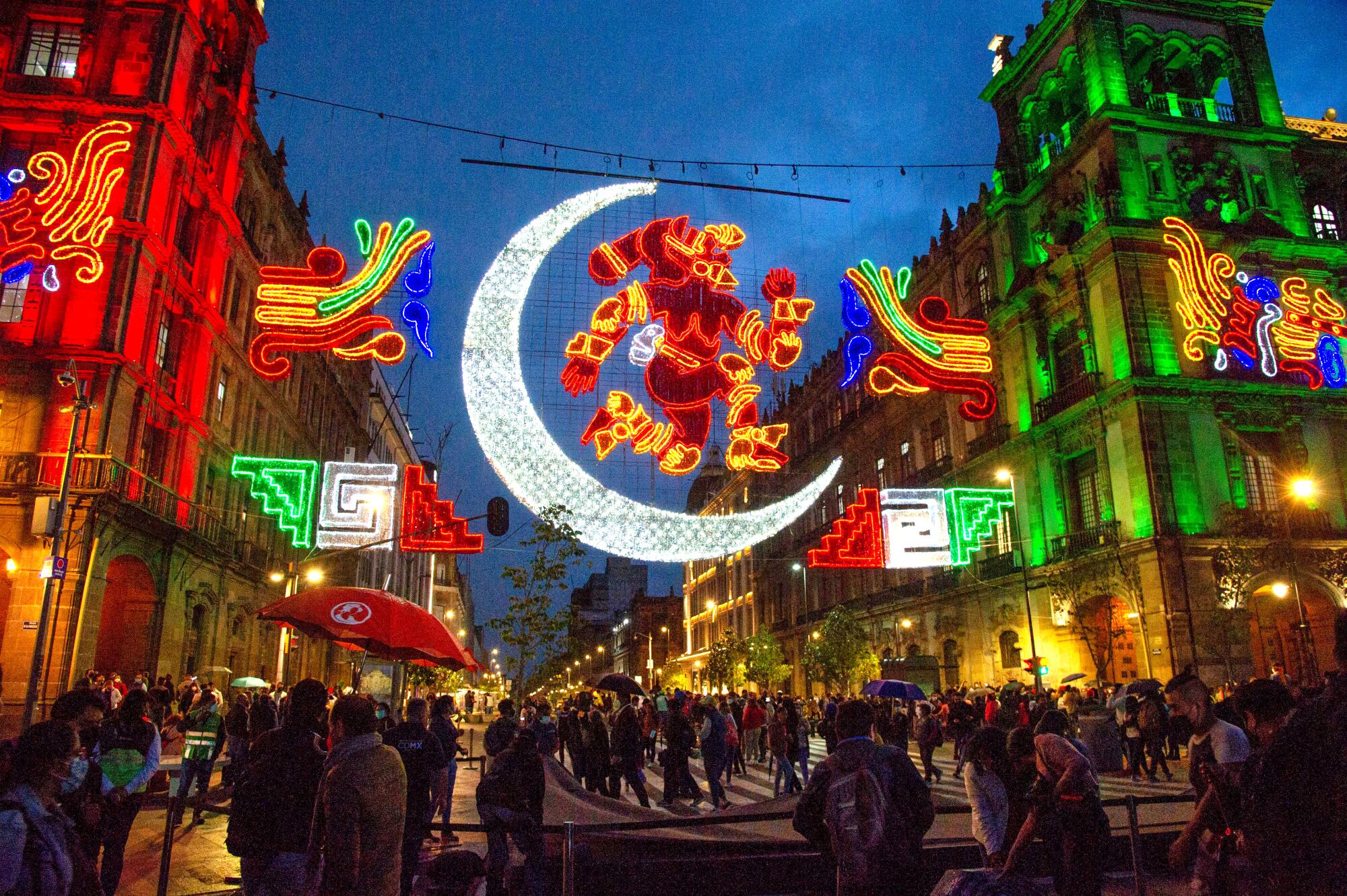
Julio Escalante, 28, a tour guide, offered a free sort of quick lecture in the historical and religious significance of the area around the Templo Mayor ruins. Pedestrians gathered around him. He said not enough Mexicans today know this history in as much detail as the later periods of colony, independence and modernity.
“The typical response is, ‘We’re tired of this topic, they came, they conquered.’ But in reality, it was a much more complex process, and we’ve barely been taught a quarter of it,” Escalante said. “Many people reject their Indigenous side. Many people reject their European side. We have to reconcile ourselves.”
Escalante said he viewed the conquest as the “sad birth” of something new.
“We simply have to change our perspective, no longer reject the Indian, the Indigenous, because at the end of the day that is our primary root, followed by the European, the Spanish, and many people don’t know, also the Asian, African and Middle Eastern roots.”
Like others in the throngs on the square, he urged patience with the López Obrador administration.
“Many [Indigenous people] are still fighting for their rights, fighting for their lands, but those are things that have come over from other governments. There’s a lot of work to be done and they just need more time. Andrés Manuel isn’t going to change all this, but we call it a small step, an opening, a break.”
He added quickly: “And well, we have three more years with this señor.”
More to Read
The biggest entertainment stories
Get our big stories about Hollywood, film, television, music, arts, culture and more right in your inbox as soon as they publish.
You may occasionally receive promotional content from the Los Angeles Times.

